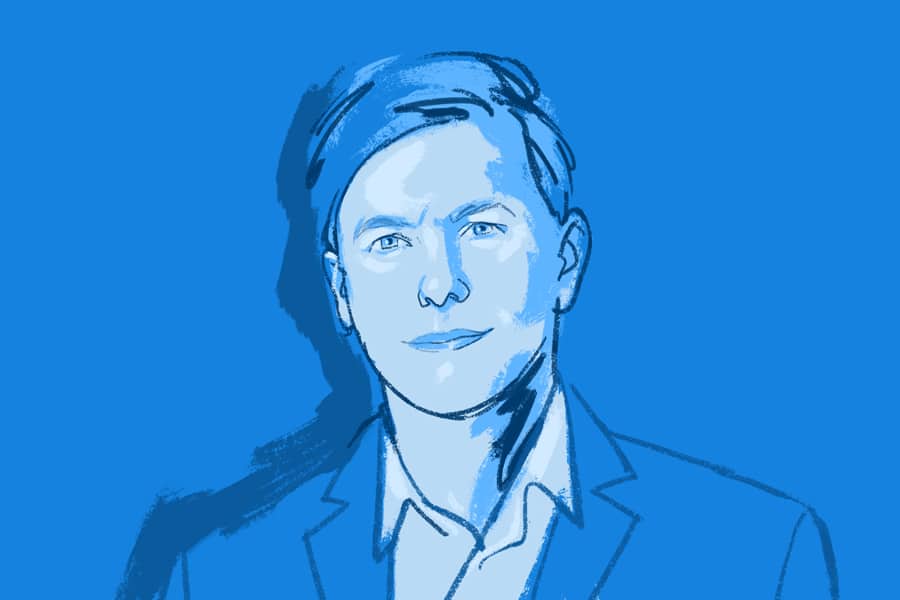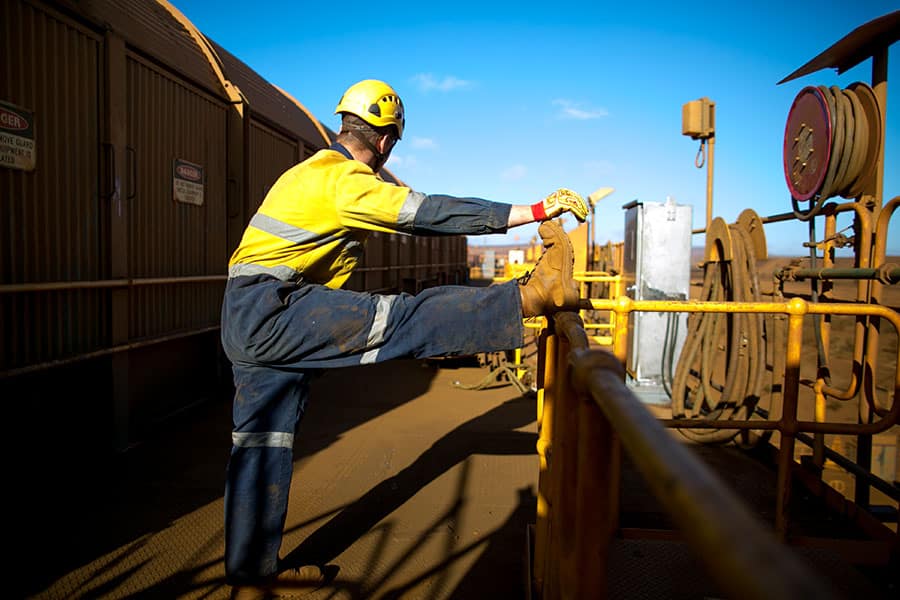“Everything you see in architecture is geometry and thus can be described mathematically. Anything that could be described mathematically through numbers could then be fed into a computer and then it’s just a question of what the numbers are, and what the numbers represent to get a design outcome ranging from the room to the region,” said M. Hank Haeusler, Associate Professor at University of New South Wales (UNSW) Sydney.
Born in Stuttgart, Germany, Haeusler has taught and lectured in Europe, Asia, North America and Australia. Besides serving as a professor, he is a researcher, educator, entrepreneur and designer in media architecture, computational design and emerging digital technologies, as well as a trained electrician.
At the beginning of his architecture career in Stuttgart, Haeusler focused on sustainable architecture and building construction and detailing. While a student, he worked for climate engineering company Transsolar in Stuttgart, where he focused on improving building performance through software packages and experimental prototypes. During a study abroad program in Tokyo and Delft, Haeusler got his first exposure to architectural theory, which wasn’t the focus of his alma mater the University of Applied Science Stuttgart.
While Haeusler considered pursuing a Ph.D., he worked prior for a year in an architecture and exhibition design firm where he first got involved in designing media facades for Mercedes-Benz car booths in Geneva and Beijing.
Data-centricity in education
This led him to RMIT University, a world leader in art and design, where Haeusler completed his Ph.D. in media façade and media architecture. Upon completing his Ph.D., Haeusler focused on writing about media, big screens and buildings, what screens mean for architecture and how architecture would change through having dynamic surfaces.
Haeusler became for one term the president and later Australasia director of the Media Architecture Institute, which was founded in the fall of 2009. The institute was designed to complement the work of universities and research institutions with research activity at the intersection of architecture and urbanism and digital media.
In 2012, Haeusler joined the staff at UNSW Sydney. A couple of years into his tenure, Alec Tzannes, the dean at the time, approached him with the goal of reviewing an existing bachelor’s degree in architecture computing to see if he could revitalize it with a 21st century spin. “I looked into what a computation design degree could be by observing and studying research discussions that existed at the time in various conferences such as eCAADe or CAADRIA. Through these engagements I identified new areas or educational domains in which I thought the degree but also architecture in the future could go,” he said.
For Haeusler, it came back to the fact that computation design is not an expression and a way of architectural style based on computer technology and algorithms such as parametricism. “It’s a vehicle to understand architecture differently and using the power of the computer to solve problems in architecture—very pragmatic but crucial problems—such as climate change, inequality amongst others outlined through the UN’s Sustainable Development Goals,” he said.
But also the local Sydney context and the needs and interests of local architecture firms were on Haeusler’s mind when developing the degree. Haeusler explained: “When we teach computation we also want to engage directly with the pragmatic needs of companies. They might not want to change their architectural style but are in need to automate repetitive work processes. There was a strong argument, in the beginning, to assist and train students to turn day-to-day workflow problems into numbers and turned them into computer programs to automate them.”
UNSW created the world’s first bachelor of computation design degree. The pragmatic and industry-focused approach accumulated in the student engagement with industry in the graduation project.
Instead of Haeusler and the university coming up with graduation projects, industry partners presented problems to the students that they are dealing with in their firm—but don’t have the time to solve on their own—or a curiosity to investigate them through a partnership with students and academics. Students are then embedded in an industry partner and learn about the problem firsthand. The academics supervise each student’s thesis, which eventually meets the requirement of a degree.
“The big bonus that makes sense for all parties and benefits everyone. The students have a foot in the door in an industry partner and find employment very, very quickly,” Haeusler said. “The industry partners get an engagement with research and can ‘trial’ their future employees during the project. UNSW benefits as well, as the faculty keeps up to date with industry challenges. Also, the university can adapt its program so students are educated in the issues they will encounter when they become employed, and we were able to publish more than 30 peer-reviewed academic outputs since the beginning of the degree.
Data-centricity for real-world problems
What are upcoming challenges and points for research? The construction process contributes to more than 50% of all waste ending up in landfills. Haeusler has thought a lot about the issue. “10% to 15% percent of all building materials that go into an architecture project will go straight into the trash. It’s like you buy ten apples and immediately throw one to two of them away even though they’re perfectly fine.”
Why is there so much waste? Research suggests it’s because architects and quantity surveyors can’t understand and calculate what’s needed, so the thinking is it’s better to order too much and throw away the extra than have a project slowed by lack of materials. However, this wasteful mentality needs to be replaced with the mentality that every type of material is as precious as a moon rock as we are with great certainty running out of finite natural resources needed in construction.
Haeusler said just avoiding waste might not be an option in the future. “I think in my lifetime, we will be in a situation where we don’t have enough resources to build the way we have been building in the past—there is just not enough material on earth to build for a near 10 billion population.”
To reduce architecture’s appetite for resources, Haeusler wants to use computation and modern manufacturing strategies under a digital sustainability framework. As raised throughout this article the building sector has two main issues, a climate problem—it uses globally most of natural resources (about 60%), produce too much emission (about 50%) and waste (about 50%)—all are interlinked and it’s unproductive, as it is one of least digitised industry in the world and needs to be digitised to increase productivity and potential speed of project delivery.
Unsurprisingly, Haeusler thinks computation and computing can help and both issues of climate change, and digitisation will be addressed in the ARC Centre of Next-Gen Architectural Manufacturing lead by UNSW.
The centre aims to lift the manufacturing’s “smile curve” in pre- and post-production by training architects in digital sustainability to deliver complex, high value-add, net-positive architectural manufacturing. Automation through computation is one of three main concentrations of the centre and the reduce of waste is one early adoption of that thinking and Haeusler predicts, that “we can and have developed scripts that determine how much material to use and how much waste will be produced.”
Although the pressure has been building on the industry to reduce waste and become more environmentally sensitive, change isn’t simple. Academics like Haeusler produce many papers and reports that address climate change, waste reduction and other related topics. However, it isn’t reasonable to expect architects to find time to read the research while burdened with deadlines. Therefore, architects might fall back on the knowledge they are accustomed to applying to get the work done.
Hence the need for computational tools with a well-developed user interface that is easy to use for architects in their early design process so a computer can calculate thousands of numbers and easily determine all the necessary information needed for construction projects. “The waste reduction tool would give you not only a number of materials used and waste produced per material, one can also associate to this material figure with the embodied carbon value of the product”, Haeusler said. “With this information, architects and contractors can reduce waste but also determine how to best proceed with the smallest ecological footprint.”
“That’s what we see as our aim for computation—not taking over design but assisting design or assisting the designer in design decisions.”
As Haeusler considers how architecture will look in the future, he imagines it as more lightweight, out of necessity due to limited natural resources available for materials in the future.
Haeusler uses city planning as an example because of its complexity and as the earliest point to think about later resource use. He envisions city planning relying on an overarching machine system that will assist humans in making informed decisions. He can see a future where major architectural and urban design decisions might be guided through a machine learning system, like a City OS (operating system).
This City OS will offer information on resources required to build and balance out the environmental, social, and governmental benefits of a project all to empower urban planners to make informed decisions.
Data-centricity for future cities
Machine learning is reliant on data. More and better data enable the computer to be of greater use. “Machine learning mainly use existing or historic data yet training a machine learning model with existing data is an issue since there are inherent problems with the datasets we have,” remarks Haeusler. He believes the problems with data are so severe that if we use our existing data, we wouldn’t be able to produce better architectural outcomes.
And the problems with data? Bias. Haeusler explains this again with the example of waste. “If we use machine learning to generate floorplans on existing floor plan data sets we would bring the ‘bias’ of waste production into the machine-generated floor plans and thus designing the something new with the same problems we had before.”
“We probably must look into generating synthetic data packages that are not ‘real’ built architecture, but optimized architecture through generative design that have not the same characteristics of human designed architecture such as aesthetic or ethical considerations but purely address the bias such as waste. If we can understand how we can merge existing ‘real’ data and new ‘synthetic’ data to achieve a quantifiable result we can design a machine-aided architecture designed by human support through machines that erases some of the biases that we have in our designs,” predicts Haeusler.
If companies want to get clean unbiased data, the government needs to be involved and make data accessible, suggests Haeusler. This type of data package is critically important and could be used for design but is not easily accessible. Currently, Haeusler and his team web scraped thousands of planning applications from council homepages to get DA-submitted floorplans designed by humans. Yet these need several computational “cleaning” processes prior to being used for its initial purpose as “real” data set.
Another example he refers in the context of urban heat island is underground services. “To plan more trees in existing streets to address the rising heat in cities one need to know where e.g., gas, water, electricity services are but these data sets are not available as machine readable formats and only handed over as a PDF,” Haeusler says. “Hence again one needs to clean and manipulate the data for a machine purpose. But if local, state and federal government would give more access to the data layers, presuming they exist and they’re clean and usable, then architects, engineers, and computer scientists could make easier use of them.”
Haeusler also cites the challenges inherent in unstructured data existing in the AEC industry such as BIM files. He gives an example: “If I tell you ‘lavatory, loo, bathroom, washroom, toilet’, you understand what I’m talking about. A computer would not understand that we can use different names for the same room. It’s challenging to label room types semantically.”
To overcome this is the second of three research directions the ARC Centre for Next-Gen Architectural Manufacturing has. The research team will investigate the huge pool of data like existing data layers or the data packages in an architectural drawing or BIM model to see if information can be extracted that helps in designing things in the future.
Haeusler is bullish on the future as he believes there are trillions of dollars to be made on architecture and infrastructure. Architects, however, will have to reimagine the industry. They need to transform their business into a digital business.
He cites tractor manufacturer John Deere as an example. While the company continues to sell tractors, it’s not where it is making money. Haeusler said, “They understood that when the tractor drives the field, the tractor can get lots of data and valuable information about agriculture, which John Deere sells.”
As for architects, their mindset needs to move beyond architecture as the end game and understand the disrupting nature of digital transformation. “There’s value and profit to make when architects transform their business to new directions to offer housing as a service, or airports as a service, etc.,”
Haeusler summarizes. “But in all fairness, there is only little support for architects to develop a digital strategy towards transforming their business model” Haeusler said the ARC Centre will focus on this as the third and most important foci in its five-year research operation.
“Digital is not about tools, digital is strategy and all the above will manifest itself without a digital business strategy in place,” he said. “It’s pointless to purchase an AR headset, a new cool software or a robot arm for your architecture office if the executive management does not know how this investment supports their strategy—if there isn’t one.
Haeusler sees the research centre consequently working toward a future industry where organisations, products and services are arranged around specific projects or problems rather than distinct disciplines. For him architecture is a numbers game, and as the industry applies numbers, it will offer tremendous value to itself and the public.
















